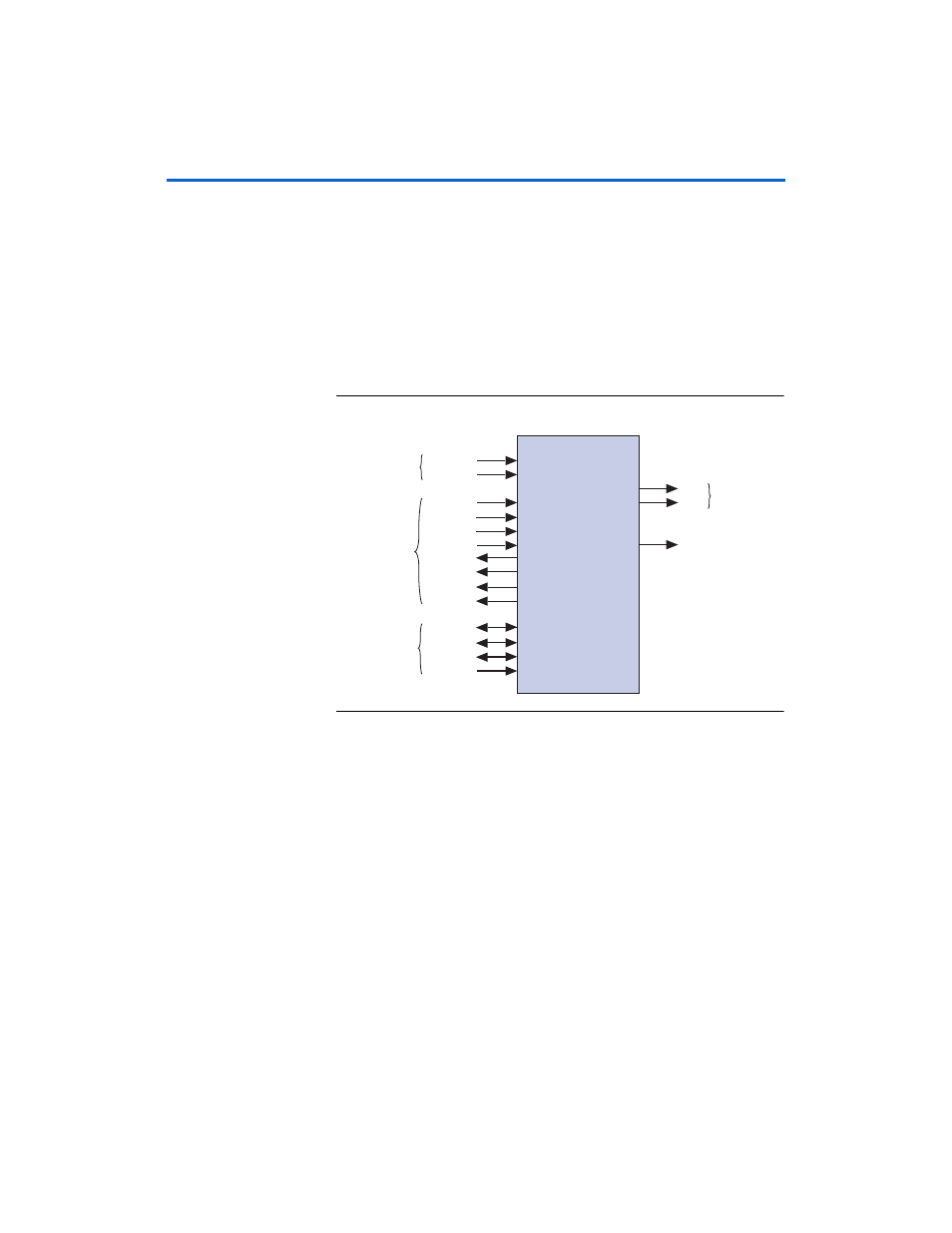Target device signals & signal assertion – Altera PCI Compiler User Manual
Page 80

3–6
User Guide Version 11.1
Altera Corporation
PCI Compiler
October 2011
Functional Overview
Target Device Signals & Signal Assertion
illustrates the signal directions for a PCI device connecting to
the PCI bus in target mode. These signals apply to the pci_mt64,
pci_t64
, pci_mt32, and pci_t32 functions when they are operating
in target mode. The signals are grouped by functionality, and signal
directions are illustrated from the perspective of the PCI MegaCore
function operating as a target on the PCI bus. The 64-bit extension signals,
including req64n, ack64n, par64, ad[63..32], and cben[7..4],
are not implemented in the pci_mt32 and pci_t32 functions.
Figure 3–5. Target Device Signals
A 32-bit target sequence begins when the PCI master device asserts
framen
and drives the address and the command on the PCI bus. If the
address matches one of the base address registers (BARs) in the PCI
MegaCore function, it asserts devseln to claim the transaction. The
master then asserts irdyn to indicate to the target device for a read
operation that the master device can complete a data transfer, and for a
write operation that valid data is on the ad[31..0] bus.
The PCI MegaCore function drives the control signals devseln, trdyn,
and stopn to indicate one of the following conditions to the PCI master:
■
The PCI MegaCore function has decoded a valid address for one of
its BARs and it accepts the transactions (assert devseln)
■
The PCI MegaCore function is ready for the data transfer (assert
trdyn
)
Target Device
clk
rstn
idsel
req64n
framen
irdyn
trdyn
stopn
devseln
ack64n
par64
par
ad[63..0]
cben[7..0]
perrn
serrn
intan
System
Signals
Interface
Control
Signals
Address,
Data &
Command
Signals
Error
Reporting
Signals
Interrupt
Request
Signal
